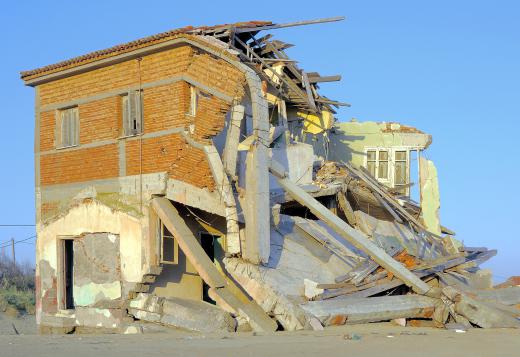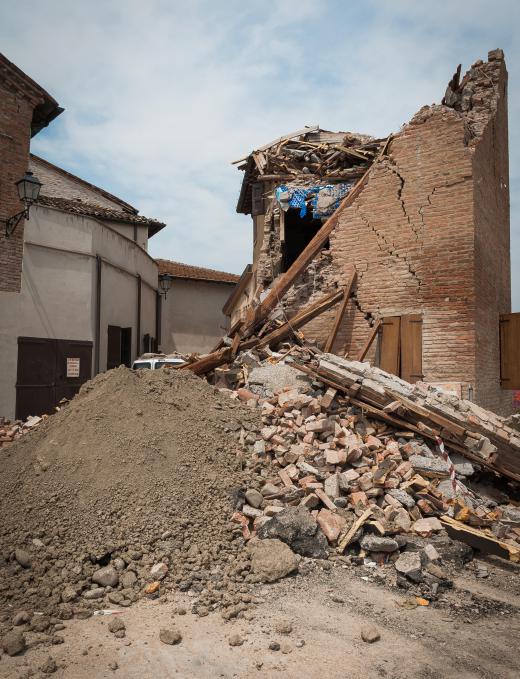Is It True That Little Earthquakes are Precursors to Big Earthquakes?
 Tricia Christensen
Tricia Christensen
The question of predicting earthquakes and how to tell if the Big One is coming remains a mystery. In recent years, several prediction models have been advanced, including the possibility of measuring thermal patterns of heat on the earth, from space, in order to serve as a predictor. Scientists have poked holes in this latest theory, and much to everyone’s dismay, no one single method is reliable for determining when an earthquake will occur. What does remain fairly constant is that most large earthquakes occur on fault lines, where constant pressure from underlying tectonic plates can make the ground suddenly shake, rattle and roll. Scientists can thus say that larger earthquakes are much more likely along fault lines, especially some noted faults like the San Andreas Fault that runs through much of California.
The question of whether little earthquakes are precursors to big earthquakes is thus a complex one. First, you’d have to define little earthquakes; are these the ones people don’t generally feel, or are they small 2.0-3.0 quakes that a few people will feel? Even then, if you do arrive at a definition you can’t say definitively that little earthquakes always come before big ones.

For instance, in California, if you look at the US Geological Survey (USGS) website, you can count hundreds of earthquakes that aren’t even felt, occurring with great regularity. If these little earthquakes are precursors to big earthquakes, then we’d constantly be having large earthquakes. On the other hand, small earthquakes suggest a certain level of fault line activity and pressure building up, and scientists regularly suggest that we must all prepare for the Big One, since it could occur at any time. Thus you can say small earthquakes may presage big earthquakes because they do suggest that eventually, at some point in the future, a big earthquake is likely.

When a large earthquake occurs, the earthquakes in the days prior are called foreshocks. The small earthquakes that occur after a large earthquake are called aftershocks. Little earthquakes don’t necessarily have to be either, but scientists may cluster earthquake activity before and after a large earthquake in the hopes of better understanding how and why earthquakes occur and under what circumstances they are most likely. Still, using the theory that little earthquakes are precursors to big earthquakes is not sound science. Only some of them are. It’s more accurate to suggest that active fault lines that produce these tiny unfelt shakers are likely at some point to produce larger earthquakes.
AS FEATURED ON:
AS FEATURED ON:













Discussion Comments
There are near constant earthquakes of magnitude 1 in California. If you subscribe to the earthquake app and ask for alerts in LA, you will be getting new alerts every few minutes.
After reading the above post, it makes me worry about the people there in Mexico. Seems like they have had several hits of quakes there in Mexico City, I believe it was two years ago and on a Monday. March or April. Just worrisome. I forget the numbers of the quake, but it was lower, I think than this time.
@istria- The mathematical difference in the amount of energy released by an earthquake is somewhat complicated. It involves complex mathematics and it ultimately depends on if the magnitude is given on the moment magnitude scale or the Richter scale.
To make things simple, a difference of 1.0 is the equivalent of 36 times more energy released, and a difference of 2.0 is roughly equivalent to a 1000 times increase in energy released. As an example, the energy released in the recent Sendai Earthquake is almost a thousand times more powerful than the Loma Preita quake that collapsed freeways and injured thousands.
@ Glasshouse- I have been glued to the news lately because I have family members in and around the Tokyo area. My uncle is a Japanese American dual citizen and his wife is from a coastal town in Northern Japan. They have been able to locate her family, but her parents lost their entire house.
The earthquake photos really show the devastation that the earthquake and tsunami caused. I have been in an a few earthquakes in Hawaii and California, but obviously nothing as big as the one in Japan. I wonder what the difference in strength is between a 6.8 quake (World Series) and an 8.9 quake is.
It seems like in some instances a large earthquake can be a precursor to an even larger earthquake. Just like how Northern Japan experienced a large earthquake somewhere in the 7.0 range, and not even a week later the same general area was struck by the largest earthquake in Japanese history. An 8.9 magnitude quake shook for between one and four minutes according to multiple sources.
The result of the earthquake was an immediate tsunami that inundated the city near the epicenter with a 10-meter tall wall of water. The damage estimates are in the billions with multiple nuclear reactors affected, hundreds dead, and entire cities underwater. Who would have expected this after a magnitude seven earlier in the week?
Post your comments